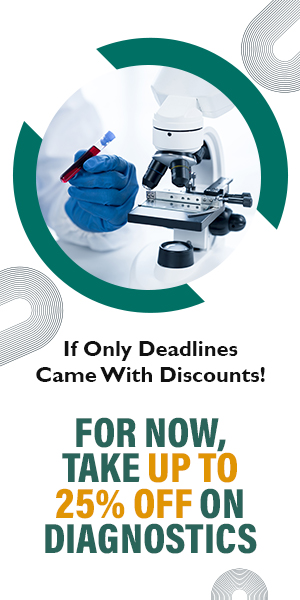Mental Health
Learning to Step Into Flow State
Entering a flow state involves complete immersion in a task, losing track of time, and ignoring distractions. Achieving this at work can boost focus, creativity, and engagement. Engage in these daily practices to know how to enter the flow state.

Have you ever experienced being completely absorbed in something? One of the best feelings at work is being in the zone – work feels effortless, everything else falls away, and we even lose track of time. This state has a name: flow state. When you're in a flow state, productivity and creativity soar, and getting great work done can feel almost as easy as breathing. Achieving this state can help people experience greater enjoyment, energy, and involvement. Flow is a condition of mind in which a person becomes fully immersed in an activity.
Mindfulness 101:Bring calm into your day with these daily tips. Sign up here.
Mihaly Csikszentmihalyi (pronounced Chick-SENT-Me-High), considered one of the co-founders of positive psychology, and pioneer of the scientific study, Pursuit of Happiness, was the first to identify and research flow. He was a prisoner during World War II and witnessed the pain and suffering of the people around him. As a result, he developed a curiosity about happiness and contentment. Csikszentmihalyi observed that many people were unable to live a life of contentment after their jobs, homes, and security were lost during the war. After the war, he took an interest in art, philosophy, and religion to answer the question, "What creates a life worth living?"
Csikszentmihalyi developed the term "flow state" because many of the people he interviewed described their optimal performance state as instances when their work simply flowed out of them without much effort.
In Csikszentmihalyi’s words, flow is:
“a state in which people are so involved in an activity that nothing else seems to matter; the experience is so enjoyable that people will continue to do it even at great cost, for the sheer sake of doing it” (1990).
Related story: How To Be More Mindful At Work And Home
Characteristics of Being in a Flow
The ability to experience flow varies among individuals. A 2017 Reference Module in Neuroscience and Biobehavioral Psychology research suggests that those with autotelic personalities are more likely to experience flow. These individuals engage in activities for intrinsic enjoyment rather than external goals. The prefrontal cortex, responsible for higher cognitive functions, temporarily down-regulates during flow, leading to a sense of time distortion and reduced self-consciousness.
- The activity itself is fulfilling and enjoyable.
- Goals are well-defined and challenging yet achievable.
- Full concentration on the activity without distraction.
- Strong sense of control over the task and its outcome.
- Experience calmness and a loss of self-consciousness.
- Receive instant feedback on performance.
- The task matches the skill level, making it doable and engaging.
- Diminished awareness of physical needs during the activity.
- Intense and focused attention on the task.
- Distorted sense of time, often losing track of its passage.
Related story: 5 Easy Mindfulness Habits To Improve Your Mental Health
How to enter a flow state?
There's a beauty in movement that goes beyond turbulence and disruption. It grants us freedom from disturbance and allows for a refined motion that brings ease and peace. But to get into a flow state? The truth of the matter is most of us struggle to maintain focus especially when attention is required. So, there are ways to achieve a flow state. By consciously applying these strategies, you can create conditions conducive to entering a flow state, enhancing your performance, creativity, and overall satisfaction in your activities.
1. Create a distraction-free zone: Designate a specific area dedicated to your activity, free from potential disruptions. Use physical barriers or "Do Not Disturb" signs to signal others, and employ digital tools like app blockers to maintain focus.
2. Enhance focus with mindfulness: Incorporate mindfulness practices such as deep breathing exercises or mindful walking into your routine. These techniques can help sharpen your focus and keep you anchored in the present moment.
3. Establish clear objectives: Outline precise and attainable goals for your activity. Break large tasks into smaller, actionable steps to provide a clear roadmap and sense of accomplishment.
4. Engage with passion: Select activities that resonate with your interests and passions. Prioritise the aspects of the task that bring you joy and satisfaction, rather than focusing solely on external outcomes.
5. Adopt a learning-oriented attitude: View each challenge as a chance to enhance your skills and knowledge. Emphasise personal growth and improvement, to make the process more enjoyable and rewarding.
6. Incremental skill development: Gradually build your expertise by tackling progressively challenging tasks. Regular practice will help you develop proficiency, making complex activities feel more manageable over time.
7. Establish transition rituals: Develop a set routine or ritual to signal the start of your activity. This could include specific warm-up exercises, listening to particular music, or setting up your workspace in a certain way to ease into the task smoothly.
8. Master your craft: Dedicate time to learning and refining the skills necessary for your activity. As you get adept, your confidence and perceived control over the task will increase.
9. Design a structured environment:Create a predictable, organised workspace that supports your activity. Consistently arrange your tools and materials, and establish a structured schedule to reinforce a sense of control and stability.
Through mindfulness, we have the opportunity to get into the depths of our bodies, minds, and hearts. achieving a flow state can significantly enhance your productivity, creativity, and overall satisfaction with your activities. By creating a distraction-free environment, setting clear and attainable goals, and engaging in activities that you are passionate about, you can foster the conditions necessary for flow. Mixing mindfulness, establishing routines, and focusing on skill development further contribute to this optimal state. Adopting the idea that peace can be found in our daily movements, no matter how small, opens the door to discovering peace in every moment.
Related story: 7 Mindfulness Activities To Enjoy At Any Age
Mindfulness 101:Bring calm into your day with these daily tips. Sign up here.
EXPLORE MORE
AI saves time, but it’s quietly draining our attention and our ability to think critically. Here’s how to regain focus without unplugging from modern life.
Every child worries as they grow up. But when anxiety starts shaping their behaviour, body, and confidence, parents need to pause and look closer. A psychologist explains how to spot the difference early.
Unloading your frustration can feel cathartic, but repeated venting may do more harm than good when it comes to emotional regulation.
Here’s a simple guide to different therapy styles and how to choose the one that fits your mind, mood, and moment.






.jpg)

.jpg)

